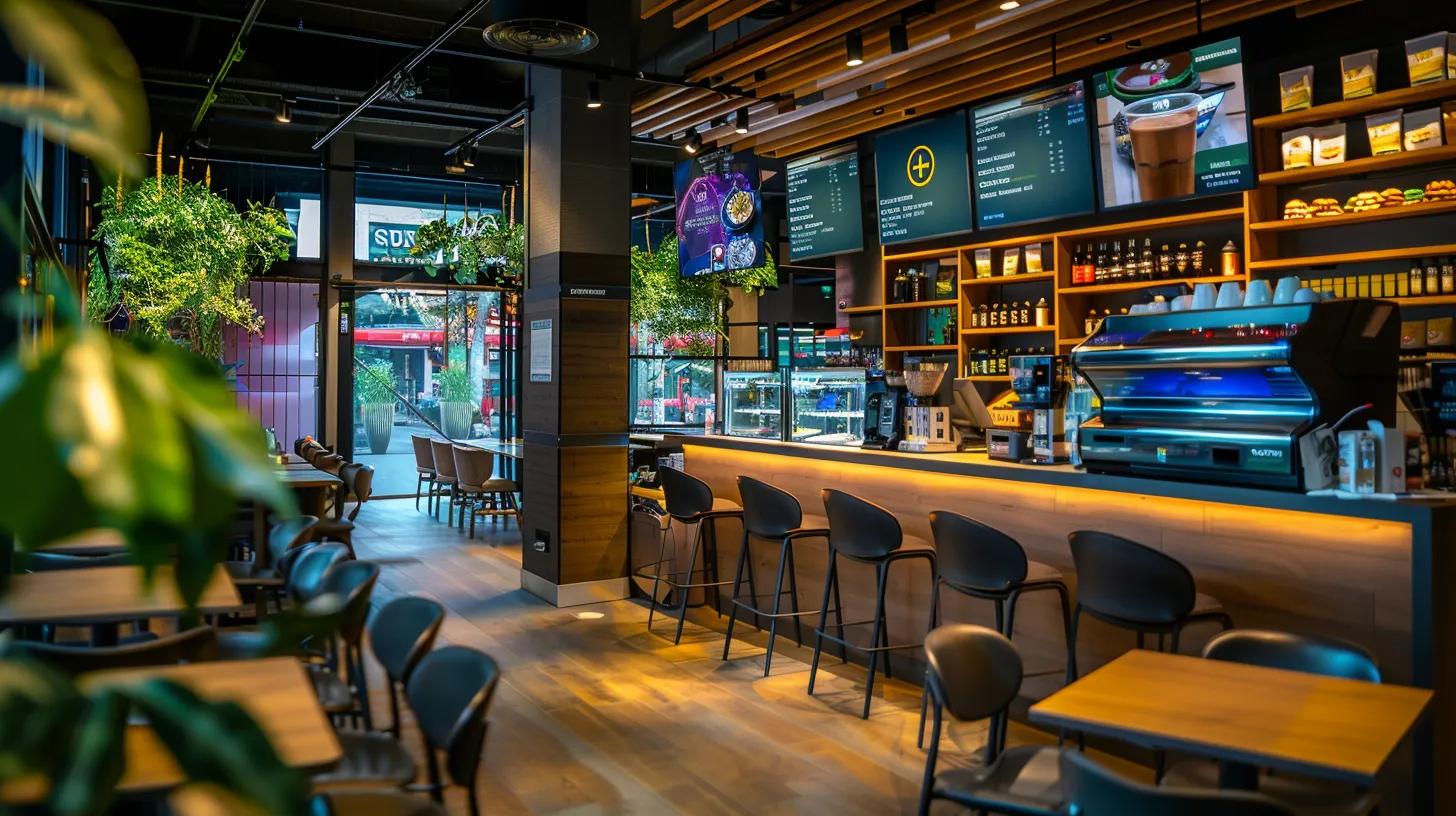Mobile commerce in 2025 isn’t just growing—it’s dominating. With more consumers making purchases directly through their smartphones, mobile is now the primary battleground for e-commerce brands. Businesses must prioritize speed, personalization, and immersive experiences to meet modern expectations.
This updated guide explores the latest mobile shopping trends of 2025, offering actionable strategies for startups, solo entrepreneurs, and small business teams ready to grow their digital presence. From mobile apps and AI-driven personalization to augmented reality (AR) and visual search, we break down what’s working—and how you can implement it today.
You’ll learn how to:
- Leverage mobile-first design to increase conversions
- Integrate voice and visual search for smarter discovery
- Optimize payment flows for frictionless checkout
- Use real-time data and AI to personalize the customer journey
- Build loyalty through sustainability and ethical design choices
Whether you’re launching a new mobile app or refining your mobile site, these trends will help you create a frictionless and future-proof mobile shopping experience.
What Are the Top Mobile Shopping Trends in 2025?
The mobile commerce landscape has evolved rapidly over the past two years. In 2025, the top trends reflect tech innovation, consumer expectations, and AI-driven user experiences:
✅ Key Mobile Trends to Watch:
- Mobile-First and Mobile-Native Design
Responsive design is no longer enough. E-commerce sites must feel native on mobile—offering swipeable interfaces, vertical video integration, and simplified navigation for thumb-driven UX. - Progressive Web Apps (PWAs)
PWAs continue to grow in popularity, offering app-like experiences (push notifications, offline access, fast load speeds) without the need for downloads—especially powerful for emerging D2C brands. - Voice and Visual Search Integration
Consumers now use AI voice assistants and visual search tools (like Google Lens or Pinterest Lens) to discover products faster. Optimizing your content and images for these new behaviors is crucial. - Hyper-Personalization with AI
Machine learning and behavioral analytics now power individualized product recommendations, dynamic pricing, and tailored promotions, all delivered in real time. - Augmented Reality (AR) Experiences
Virtual try-ons and 3D product views aren’t just novelties—they’re conversion tools. Especially in fashion, beauty, and home decor, AR improves engagement and reduces returns. - Frictionless Checkout & Mobile Payments
One-click checkouts, digital wallets (Apple Pay, Google Pay, PayPal), and biometric authentication are becoming the standard. The goal: eliminate every barrier between browsing and buying. - Sustainability in the Mobile Experience
Mobile shoppers care more about transparency and ethics. Highlighting sustainable packaging, carbon offsets, or ethical sourcing within mobile apps and checkouts builds trust and loyalty.
How Is Mobile App Commerce Fueling E-Commerce Growth in 2025?

Mobile apps have become mission-critical for e-commerce brands looking to deepen engagement, improve retention, and scale revenue. In 2025, mobile app commerce is no longer just a convenience—it’s a growth engine that delivers personalized, frictionless experiences users can’t get from a basic mobile website.
Key Advantages of Mobile Apps Today:
- Lightning-fast performance with preloaded screens and native UX
- Push notifications for real-time promotions, restocks, or loyalty rewards
- AI-driven in-app product recommendations based on behavior and purchase history
- Geolocation-based offers and personalized deals that lift conversions by 25–35%
- Built-in payment solutions (Apple Pay, Google Pay, Shop Pay) that enable one-tap checkout
- AR-powered product visualization for trying on apparel, makeup, furniture, and more
- Gamified loyalty programs that increase session frequency and lifetime value
Apps also foster brand community by integrating social sharing, exclusive content, and app-only drops, which turn casual shoppers into loyal customers.
If you’re serious about long-term growth, investing in mobile app infrastructure is no longer optional—it’s essential.
Why Mobile Website Optimization Is a Non-Negotiable in 2025
For brands that don’t yet have a mobile app, your mobile site is your storefront—and it must perform like one.
With 70%+ of retail traffic now coming from smartphones, a poorly optimized mobile site creates immediate friction, lost trust, and abandoned carts.
Mobile Optimization Essentials for 2025:
- Sub-2-second load times: Speed is everything. Even slight delays hurt conversion rates.
- Fully responsive design: Your site should adapt fluidly to any device size or orientation.
- Simplified navigation: Use sticky menus, intuitive icons, and collapsible product filters for easy browsing.
- Mobile-optimized visuals: Compress images without losing quality, and ensure fast-loading carousels and videos.
- One-page checkout: Reduce clicks and typing—especially on mobile keyboards.
- Touch-friendly UI: Ensure buttons, CTAs, and forms are easily tappable on all screen sizes.
Bonus: Sites optimized for mobile are also favored by Google’s mobile-first indexing, giving you a better chance of ranking in both traditional search and AI-generated results (SGE).
Monitoring user behavior through tools like Hotjar, GA4, or session replays can reveal where customers drop off—so you can adjust layout, copy, or speed issues proactively.
What Are the Latest Mobile Payment Trends and Technologies in 2025?

Mobile payments in 2025 are faster, smarter, and more secure than ever—driven by AI, biometrics, and seamless integrations. Today’s consumers expect a checkout process that’s invisible, secure, and friction-free.
Key Mobile Payment Trends in 2025:
- Universal Digital Wallet Integration: Apple Pay, Google Wallet, Shop Pay, and platform-native wallets (e.g., TikTok Pay) offer one-tap checkouts across devices and platforms.
- Biometric Authentication: Facial recognition, fingerprint scanning, and even voice-based identity verification are standard for fraud prevention and seamless logins.
- Tokenized & Encrypted Transactions: Powered by AI and blockchain infrastructure, these technologies reduce payment fraud while boosting trust in mobile commerce.
- Loyalty-Linked Payments: Customers automatically receive rewards, cashback, or exclusive pricing at checkout—directly linked to mobile payment apps.
- Buy Now, Pay Later (BNPL) Expansion: BNPL providers now integrate with mobile platforms using real-time credit scoring to personalize offers without added friction.
- In-App Checkout & Social Commerce Payments: Whether on TikTok Shop, Instagram Checkout, or within a mobile app, the line between browsing and buying is gone.
For brands, integrating these payment methods not only improves the checkout experience but also boosts conversion rates and cart completion—especially on mobile where attention spans are short.
How Personalization Is Redefining Mobile Shopping in 2025
In 2025, mobile shopping is no longer transactional—it’s contextual and personal. Consumers expect every interaction on your app or website to feel tailored to their preferences, habits, and intent.
Personalization Tactics That Drive Results:
- AI-Powered Recommendations: Real-time product suggestions based on browsing history, abandoned carts, and seasonal behavior patterns.
- Dynamic Mobile UI: Content blocks, banner images, and offers adapt automatically per user—creating a custom shopping experience for every session.
- Predictive Messaging: Push notifications and SMS alerts that reflect customer lifecycle stages (e.g., “Almost out of stock!” or “Your size is back!”).
- Smart Merchandising: AI reorders product layouts, filters, and featured items based on known preferences and click behavior.
- Cross-Channel Personalization: Email, mobile site, and app experiences are unified—so customers feel continuity, whether they browse at lunch or buy from their couch.
This level of personalization doesn’t just increase conversions—it also builds emotional connection and loyalty, driving repeat purchases and higher lifetime value (LTV).
The Role of Social Commerce in Mobile Shopping in 2025

Social commerce is now a core driver of mobile sales, not just a discovery tool. Platforms like TikTok Shop, Instagram Checkout, YouTube Shopping, and even Pinterest now allow users to watch, browse, and buy—all without leaving the app.
What’s Changed in 2025:
- Shoppable video content is the new norm: short-form, vertical videos featuring clickable product links and creator endorsements.
- Live selling events combine influencer Q&As with limited-time offers to drive urgency and engagement.
- In-app checkout is seamless, with autofill payment, saved preferences, and instant confirmation.
- User-generated content (UGC) remains the most trusted source of product validation, supported by real-time reviews, tags, and testimonials.
By integrating product discovery with peer influence and one-tap transactions, social commerce encourages impulse buying and builds trust—all within the apps users are already spending hours on daily.
How Emerging Technologies Are Reshaping Mobile Shopping in 2025
Today’s mobile shopping experience is smarter, more immersive, and more responsive—thanks to advancements in AR, voice commerce, and artificial intelligence.
Augmented Reality (AR) for Try-Before-You-Buy Confidence
AR has become a standard feature for mobile retailers, especially in:
- Fashion: Virtual fitting rooms help customers “try on” clothing and accessories using just their phone camera.
- Home decor: Shoppers can place furniture or decor virtually in their own rooms to assess scale and style.
- Beauty: AR filters allow users to test shades, tones, and textures before buying.
This interactivity builds buyer confidence, reduces returns, and boosts conversions by up to 40% in some sectors.
The Growing Impact of Voice Commerce
Voice-enabled shopping is expanding rapidly, particularly with the evolution of conversational AI assistants and natural language understanding.
Key 2025 advancements include:
- Voice-activated reordering of frequently purchased items
- Voice search optimization for “near me” mobile queries
- AI-powered voice assistants in branded apps and smart home integrations
For multitasking consumers and accessibility-conscious shoppers, voice commerce offers frictionless convenience—especially for reorders, quick product searches, or adding items to a wishlist.
AI’s Expanding Role in Mobile Commerce
AI now powers nearly every aspect of mobile commerce, from back-end data processing to real-time customer engagement.
Top use cases in 2025:
- Predictive product recommendations based on behavior, preferences, and seasonality
- Dynamic pricing engines that adjust in real-time based on demand, inventory, or location
- AI chatbots and virtual shopping assistants offering instant support, upsells, and guided shopping flows
- Personalized homepage and feed layouts for each app user
With AI handling the complexity behind the scenes, customers experience a simpler, smarter, and more intuitive path to purchase.
⚠️ Key Challenges & Future Outlook for Mobile Shopping in 2025

Despite incredible advancements, mobile commerce still comes with challenges—especially for smaller brands aiming to scale without sacrificing performance, security, or user experience. As mobile tech evolves, businesses must stay agile, strategic, and customer-centric.
Common Mobile Shopping Challenges for Retailers
- Data Security & Trust: Rising data privacy concerns require advanced encryption, biometric login, and transparent data practices.
- Performance Across Devices: With so many screen sizes, retailers must deliver consistent, fast-loading mobile experiences—especially when integrating AR, video, and AI features.
- Keeping Up With Consumer Expectations: Shoppers now expect hyper-personalized, interactive journeys—failing to meet that bar leads to bounce.
- Fraud Prevention & Checkout Integrity: Balancing seamless UX with fraud protection is key to maintaining trust.
- Integration Complexity: Combining app, web, voice, and in-store data into a unified strategy remains technically challenging for growing teams.
The Future of Mobile Shopping
Here’s what the mobile commerce horizon looks like in 2025 and beyond:
- Predictive Personalization powered by AI and real-time behavior tracking
- Inventory-aware marketing, driven by AI-linked stock visibility
- Immersive commerce through VR, AR, and mixed-reality product discovery
- Wearable & IoT-powered shopping, allowing on-the-go voice reorders and instant payments
- Universal loyalty integration across apps, in-store, and third-party marketplaces
Retailers that adopt scalable, data-secure, and mobile-optimized solutions will lead the next wave of e-commerce.
Data-Driven Success: What to Track & Why
To grow intelligently, brands must monitor key mobile performance metrics that impact UX, revenue, and retention.
| KPI | What It Measures | Why It Matters |
|---|---|---|
| Conversion Rate | % of users completing a purchase | Indicates funnel health |
| Bounce Rate | % of users leaving without interaction | Reveals UX or speed issues |
| Cart Abandonment Rate | % of shoppers leaving before purchase | Highlights friction points in checkout |
| CLV (Customer Lifetime Value) | Total value per customer | Informs retention and reactivation strategies |
| Page Load Time | Mobile page performance | Impacts both rankings and conversion rates |
| Repeat Purchase Rate | Frequency of return customers | Indicates loyalty and product-market fit |
| Session Duration | How long users stay engaged | Higher durations = better engagement |
Tip: Use A/B testing to optimize layouts, CTAs, and flows across devices.
How AI & Personalization Maximize Mobile ROI
We help brands implement:
- AI-powered product recommendations that lift sales 20–40%
- Predictive promotions triggered by browsing behavior or lifecycle stage
- Chatbots & smart assistants that lower support costs and increase satisfaction
- Automated retargeting flows across email, SMS, and app notifications
These tools reduce marketing waste and generate higher returns with lower effort.
Quick Reference: Mobile Commerce Trends & Their Benefits
| Trend | Feature | Benefit | Technology |
|---|---|---|---|
| Mobile App Commerce | Personalized, fast, native experience | Higher conversions & loyalty | AI, App Analytics |
| Mobile Web Optimization | Responsive design, speed tuning | Better UX & lower bounce | Lazy Loading, CDN, AMP |
| Digital Wallets | Contactless checkout, loyalty linkage | Secure, fast transactions | Blockchain, Biometrics |
| AR Shopping | Virtual try-ons, 3D previews | Fewer returns, better product understanding | ARKit, WebXR, 3D Modeling |
| Voice Commerce | Smart assistant ordering | Hands-free convenience | NLP, Google/Amazon SDKs |
| Omnichannel Integration | Unified UX across platforms | Consistent brand experience | Real-time CRM, APIs |
| Personalization | Dynamic content & recommendations | Higher engagement, increased CLV | Machine Learning, CDPs |
✅ 5 Best Practices to Improve Mobile UX in 2025
- Streamlined Navigation – Use thumb-friendly icons and sticky menus for effortless browsing.
- Optimized Load Speed – Eliminate unnecessary scripts and compress visuals.
- Hyper-Personalized Content – Deliver product suggestions, dynamic pricing, and location-based offers.
- Seamless Mobile Checkout – One-click payment and biometric verification.
- Unified Brand Experience – Keep tone, style, and offers consistent across mobile, web, and in-store.
Mobile Shopping FAQs
Q: How do mobile app features drive e-commerce growth?
A: Personalization, push notifications, loyalty programs, and in-app checkout make mobile apps powerful tools for boosting conversions and repeat purchases.
Q: What’s the biggest benefit of mobile website optimization?
A: It ensures your brand is accessible, fast, and user-friendly across devices—critical for capturing and converting mobile-first shoppers.
Q: How does AR improve mobile retail?
A: It empowers customers to visualize products in their own space, increasing confidence and decreasing returns.
Q: What’s AI’s role in mobile commerce?
A: From personalized offers to smart inventory recommendations and automated service, AI streamlines both marketing and operations.
Q: How does social commerce fit in?
A: Social platforms now allow end-to-end shopping—users discover, click, and buy without leaving the app, creating frictionless purchase paths.
Q: What challenges should retailers watch out for?
A: Key issues include data security, site speed, consistent UX, and integration of advanced features like voice search and AR.
Q: Why invest in omnichannel integration?
A: It ensures customer data, loyalty programs, and marketing touchpoints are synced across all platforms—creating a seamless brand experience.
Ready to Elevate Your Mobile Commerce Strategy?
If you’re ready to optimize your mobile experience, implement cutting-edge technology, and drive higher conversions, we’re here to help.
Book your free consultation today and get personalized advice on improving your mobile app, site, or omnichannel e-commerce strategy.
→Book Now Schedule Your Free Strategy Session









